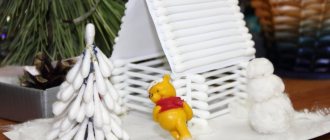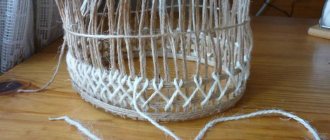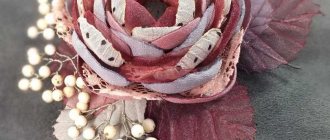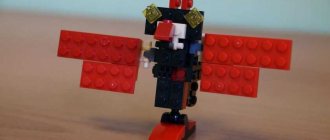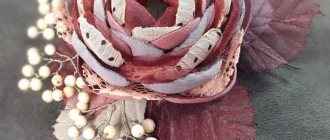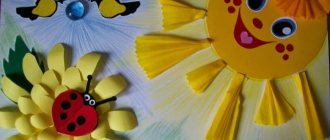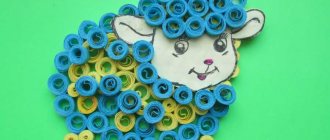Why coins?
- the material is as accessible as possible;
- nothing will happen to the coins for a long time;
- ease of use
- beautiful and varied type of coins;
- You can find craft options for both adults and children.
What is monisto: making an original decoration with your own hands
Oh, how many different types of jewelry the modern jewelry industry offers! But in the old days fashionistas loved to decorate themselves no less than our contemporaries. They sometimes carried entire fortunes on themselves, trying to outdo their rivals in the struggle for the favor of eligible suitors.
Today we will talk about perhaps the most famous decoration with an ethnic and historical twist. Our focus will be on the monisto, a decoration that was once popular among many peoples of the world. Now interest in it has decreased somewhat, but gradually the fashion for it is heating up, so that it will soon take up its permanent residence in the boxes of recognized style icons.
What crafts should you start with?
If you are just starting to try to work with metal money, it is better to choose simpler options to get your hands on. For example:
- pasting coins on vases, pots, flowerpots;
- decorating frames for photographs, paintings;
- creating topiary, money bottles, boxes.
In the future, experienced craftsmen may create “floating bowls”, money trees, home and furniture decor, and jewelry making.
DIY money horseshoe-topiary made from twine and coins
There is a special sign - giving a horseshoe for good luck. I suggest you show originality and make a horseshoe with your own hands. The master class examines in detail the process of making topiary from coins and twine in the shape of a horseshoe.
For work we will need the following materials:
- thick corrugated cardboard,
- jute twine,
- pencil (or a ready-made printed drawing of a horseshoe),
- strong wire (I have a steel hanger),
- any suitable container for planting topiary (I have a small silicone mold),
- building plaster (alabaster),
- some water,
- a small piece of burlap,
- scissors,
- pliers,
- round pliers,
- hot glue gun,
- for decoration: coins and souvenir bills.
Advice from the experts
Before starting work, you should clean the coins from blackness, dirt, and rust. You can clean it at home using:
- citric acid (add citric acid to warm water, stir, put coins in there for 10-15 minutes, then rinse under the tap);
- vinegar + toothpaste (dip money in a 5% vinegar solution, after 5 minutes brush with toothpaste, rinse under the tap);
- Coca-Cola (dip coins in lemonade for about a week, then brush and rinse);
- soda (mix soda, toothpaste and ammonia, rub the money with the resulting mixture, then rinse under water).
Let's look at a few examples of creating crafts from coins.
What is monisto
According to Wikipedia and many dictionaries, a monisto is a type of necklace consisting of coins, beads, crosses, precious stones, pearls, corals and so on. The name comes from the ancient (proto-Indo-European!) word “moni”, that is, “neck”. This is a neuter noun, but sometimes the feminine form of “monist” is used to denote individual elements of decoration (by analogy with “beads” - “bead”).
In some sources you can find a different approach to the etymology of this word. They believe that the word “monista” comes from “coin”. But historians argue that the first monists appeared earlier than commodity-money relations.
Nowadays this word refers to an ornament made of coins or other forged elements worn around the neck. Beads from various materials can also be used as additions, but only metal plaques allow the necklace to be classified as a monisto.
Photo frame
Required materials: coins of different sizes, cardboard, glue, possibly putty, plasticine, modeling dough, paint, varnish.
Work progress: Cut out a hole of the required size from cardboard. We cover the frame with coins according to our own imagination. To make it easier to change photos, it is fashionable to attach special photo holders to the back.
Money Tree
Required materials: coins, thick wire for the trunk (or real branches), thin wire, drill, additional material according to the plan (for example, paints, a stand, etc.).
Work progress: create a tree from branches or wire and plant it on a base. Next, use a drill to make small holes in the coins, thread a thin wire through them and twist branches of 2-4 coins.
When we get the required number of branches, we attach them to the tree trunk. If you are not satisfied with the appearance (wire sticks out, unevenness), then, if necessary, mask it with putty, plasticine or other available material.
If desired, the finished wood can be coated with paint or varnish.
The money tree symbolizes financial stability and attracts money to the house.
How to make a monisto for a gypsy with your own hands. We create a monisto-necklace a la russe
From time immemorial, monisto was a kind of indicator of a woman’s family wealth. Nowadays, when mentioning monisto, gypsy outfits come to mind, but this is not entirely historically true. Slavic women in the 16th-18th centuries proudly wore their monistos, showing the wealth of the family and sometimes using it as a wallet. According to some reports, in order to attract a rich groom, girls could be undernourished, as long as the monisto was made of expensive metal. Various types of jewelry were worn in princely and wealthy social circles: necklaces were composed of gold and silver coins, medallions, moons, precious stones, glass beads, amulets, and openwork chains.
Because they were so valuable, they, along with earrings and bracelets, were put away at night in “golovnichki” - small chests with a sloping lid, which were placed under the head at night and covered with a pillow.
The fashion for such jewelry is constant: various versions of the monist can be seen in the collections of Bottega Veneta, Dolce & Gabbana, Emilio Pucci. This year, jewelry, for example, is prominently featured in Chanel's 2022 cruise collection.
In order to keep up with fashion traditions, we will need:
1. Tools: pliers, wire cutters, round nose pliers.
2. Memory wire 96 cm and fishing line or jewelry cable about 1.5-2 m.
3. Toggle lock
4. Pins-studs 0.5 mm.
5. Connecting rings.
6. Spacers.
7. Stone beads - we chose turquoise, corals, agate, which were highly valued in Ancient Rus', and which wealthy people could afford. Additionally - amazonite beads. The color scheme: orange-blue-white - also represents the main Slavic symbols: life (fire) - sky - light (sun).
8. Czech glass beads.
9. Connectors for 3 threads and connectors for 2 threads.
10. Row separators for 3 threads.
11. Metal elements for two conical threads.
12. Protectors for fishing line or hummock.
13. Metal pendants in the shape of coins with the favorite Slavic symbols of the sun and flowers.
STAGE 1.
Traditionally, we start with a sketch. Since we initially decided that our monisto should be luxurious and speak of the wealth of its owner, the decoration will consist of three levels:
1. A three-row choker is the main supporting element of the necklace. It should be made of rigid memory wire.
2. Necklace covering the neckline. It receives the main attention, so it should be the most “rich”, with the massiveness traditional for Slavic jewelry, that is, it should contain the most metal and coins.
3. A string of opera beads (up to 90 cm) - which will be a tribute to modern fashion.
STAGE 2.
Let's start with the first level, that is, the choker. Cut three equal pieces of memory wire, approximately 32 cm each. The pieces should not be perfectly equal to each other: in order for a choker of this shape to fit well and not look like a collar, it is recommended to make each row half a centimeter longer than the previous one. Outwardly, it is almost imperceptible, but when worn, it is immediately felt, since we took into account the anatomical shape of the neck.
Carefully bend the ends of the wire into loops and secure them to the connector, as shown in the photo.
STAGE 3.
We string the beads. We recommend doing this simultaneously for all three wires. In the choker we used coral oval beads 8x4 mm, flat turquoise beads 5x3 mm and for the central part pale pink beads made of Czech glass: the monisto should be bright and draw attention to the chiseled neck of its owner.
Having filled approximately 9 cm with beads, we put on the first row separator. We chose a divider with a floral ornament in the Slavic style. The next separator will be 4 cm from the first.
Time to move on to the center part of the choker. Take a closer look: here we have made an unequal number of beads. The top row is half a centimeter shorter than the middle one, and the second row is half a centimeter shorter than the bottom one. This is also done to take into account the anatomical features of the girl’s neck.
We put the first coin pendants on the bottom row.
Next, we close the central part with another row separator and mirror the set of beads. We complete the choker by making loops at the ends of the wire and connecting them to the connector.
We attach a toggle lock to the connector.
STAGE 4.
Coin painting
Required materials: coins, glue, plywood/cardboard, frame, paint or fabric.
Work progress: first you need to decide what will be depicted in the picture. Let's look at the example of a heart. Prepare the base (paint or drape plywood/cardboard with fabric). Draw a heart. And then there are two options for creating a picture:
- Painting in one layer. It's simple: we cover the drawn space with coins. To make the picture original, you should choose coins of different sizes for this method, then the image will look more interesting
- Three-dimensional picture. For this option, you can use coins of the same size. First, glue the coins in one layer. Next, glue the second layer, but step back from the edge by about 1 cm. Using the same scheme, glue the third layer and continue until we reach the required volume.
This painting will be a wonderful gift for friends and family for any event.
Canvas for good luck
To make the painting you will need the following materials:
- photo frame, size is selected depending on the size of the tree;
- fabric for the main background, it is better to choose a denser one;
- paper napkins;
- glue;
- coins, all of the same denomination is selected, or they can be of different denominations;
- heat gun;
- acrylic paint, it is recommended to choose black and bronze;
- scissors;
- brush;
- marker or pencil;
- a small piece of foam rubber or sponge.
The master class consists of the following stages. First stage. First you need to carefully remove the glass from the frame and put it aside for a while. Place the cardboard base on the fabric and trace with a pencil. Cut out the fabric and apply a thick layer of glue onto the cardboard. Glue the fabric onto the cardboard and dry thoroughly. Now you can draw a sketch of the future tree.
While the fabric is drying, we don’t waste time, but prepare the coins for work. They need to be cleaned and degreased to make it easier to apply paint.
Second phase. Each napkin needs to be folded in half and cut to get long flats. Depending on the texture of the future tree, the strips are made from one to one and a half centimeters in size.
You can start twisting the bundles. Place a strip of napkin in a cup of cold water. She should be completely wet. Remove carefully so that the strip does not tear or lose its shape.
We hold the strip in the palm of one hand, and with the other we begin to slowly twist it into a tourniquet. The process is similar to creating “sausages” from plasticine. In this case, you should try to twist the tourniquet at approximately an angle of 45 degrees. You need to twist it as tightly as possible and, placing it at a short distance from each other, let them dry well.
Related article: DIY New Year's cards for kids: master class with diagrams
Third stage. To make it easier to work with flagella, you need to moisten them a little with water. You can use a flower sprayer. Next, take one flagellum, lubricate it well with glue and place it on a prepared base made of cardboard and fabric. A sketch of the tree will help you distribute the strands in the right direction. But it is worth remembering that you do not need to apply too much glue. Excess glue can degrade the appearance of the wood once it dries.
Fourth stage. To create thin branches of the tree crown, you can use a glue gun. Hot glue is applied along the contour of the branches of the sketch in thin strips. And while it has not yet hardened, we glue the coins. To create a more three-dimensional image, you can paste several layers of coins, placing them in random order. The number of layers and coins depends only on the wishes of the master. The “cobwebs” left on the tree after using a glue gun can be easily removed with a stiff brush. After this, the painting must be given time to dry completely.
The final stage. Now the elements of the picture, namely the trunk and crown, need to be primed. Using a piece of foam rubber, apply a layer of black acrylic paint to the entire tree. And again we leave it to dry. The tree trunk will have to be coated with black paint one or two more times. When dry, napkins can almost completely absorb the color.
Next, take bronze-colored acrylic paint and pour a little into a shallow container. We dip the sponge very slightly into the paint and easily, with the same effort, we go over the entire tree and background. If you are not sure that it will turn out well, it is better to first practice on a sheet of paper or a piece of fabric.
Instead of bronze acrylic paint, you can use silver or gold paint. You can try paint combinations on a different surface, this will help you choose the final option.
Article on the topic: Raglan crochet on top: raglan pattern for children, learning to knit a beautiful jacket from the neck
You can also choose spray paint rather than acrylic paint for your work. When painting with such paint, you should remember that when applying you need to hold the can at a distance of about 50 cm, and spray with smooth movements. If desired, the frame can be painted or decorated with coins. Then turn our picture frame face down and carefully place the glass. Secure the resulting picture with clamps to the frame.
The painting with the image of the money tree is ready!
Below are several photos of tree options made from coins.
Letters or numbers
Required materials: coins, glue, base (cardboard, plywood, foam).
Work progress: cut out letters or numbers from the existing base. Cover the base with coins.
This extremely simple decor can be used to decorate a photo zone at any photo shoot, any holiday or event.
DIY materials and tools
The base of the craft can be made from corrugated cardboard, plywood, wood, foam plastic, and even paper and wire.
The base of the desired shape is obtained from plywood, but the cutting process is quite labor-intensive.
Styrofoam will make an excellent piece. But it is extremely inconvenient to use because it constantly crumbles.
For sawing, cutting and other manipulations, you will need a jigsaw, a stationery knife or scissors, etc., respectively.
Vases
Required materials: coins, base (any vase you want to decorate), glue.
Progress of work: paste coins over the vase taken as a basis.
Additionally, for such a vase you can make branches and place them inside.
Coin necklace
Materials needed: coins, hammer, drill or awl, necklace fittings.
Work progress: first you need to flatten the coins using a hammer. Firstly, this way we will remove the design from the coins, so that not 10-kopeck money, but beautiful metal circles, will appear on the neck. Secondly, the thinner the coin, the easier it is to make holes in them. Therefore, the next step is to make these same holes and attach the coins to the fittings we have.
Any decoration is made using this principle. It all depends on the chosen fittings. This could be a bracelet, brooch, earrings, rings.
How to make a monisto with your own hands for an oriental costume. Costume design
After the base of the costume is covered with material, you need to start decorating. You should decide what will be sewn or glued on the bodice and belt of the oriental costume. Beaded stones with hanging beads look much richer than a sequined suit. The work of embroidering sequins in combination with beads is the most labor-intensive. The bodice of the suit is decorated with the selected material.
There are belts that have a relief pattern with curved ends, as in the photo below. If you are going to sew an oriental dance costume with your own hands with a complex belt that contains cut-out parts, you need to think about how to make the openwork part solid. No matter how dense the fabric of the belt is, under the weight of the embroidery it will sag and the back surface will be visible. Here you need clamps, they can be wire or whalebone. In this case, the shape will hold.
The belt in the photo has intricate embroidery, and the hanging is made not with tassels, but with waves of small beads. The belt of an oriental costume has a center at the back. The front part of the belt does not have a center, this is convenient for the case when a young dancer gains or loses some weight and needs to increase or decrease the volume in the side seam.
The flower depicted in front lies as if on the side and looks impressive. It is more difficult to make changes to a belt centered in front and behind if the dancer's size changes. Therefore, before you start embroidering a belt, you should think about the above problem. You can make a fastener at the back using two strong Velcro strips. In this case, there is no need to embroider or narrow the belt. Just move the Velcro. It won’t be visible from a distance, but the belt looks solid.
How to extend the life of a finished product?
Another advantage of coins as a material for creating decor and crafts is that it is easy to maintain in its original condition or reanimate. For this you can use acrylic paints or varnish.
This coating of coin crafts will make them brighter and not exposed to the external environment.
In fact, coins can be used for anything:
- Furniture decoration (mirrors, tables, stools, bedside tables);
- To create original gifts for family and friends;
- For crafts for kindergarten and school;
- Coins can be used to make individual jewelry (brooches, necklaces, earrings).
To make crafts from coins, all you need is your desire. Ideas? You can take it from the Internet. Material? Somebody probably has coins lying around, but everything else can be bought at the store.
Good luck in your endeavors!
What can be done to ensure that the craft does not lose its spectacular appearance over time?
Experienced craftsmen cover coins with spray paint (silver or gold) and then with acrylic varnish in several layers. This item is easy to care for. It can be wiped with a damp cloth.
How to achieve a smooth surface? If the gaps between the pennies bother you, you can fill them with silicone. Moreover, it is not necessary to use a transparent composition.
Chair decor with coins
Money tap made from coins

